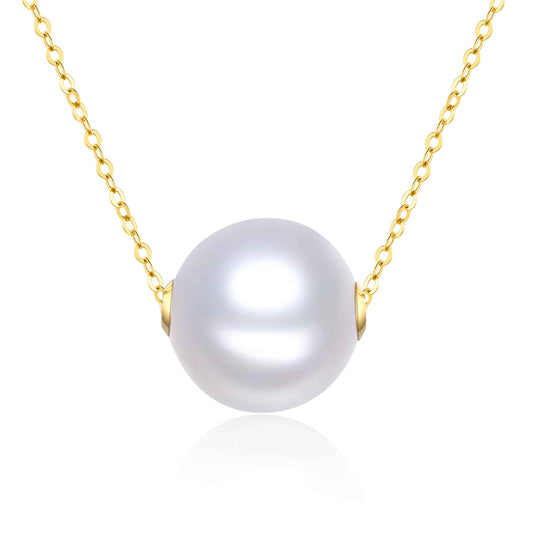
Ruth Bader Ginsburg: The Pearl of Dissent
Share
She would not allow years of discrimination to continue on her watch
What if people call you difficult, controversial, and out of place? Oysters teach us that no matter what your challenges, if you acknowledge them instead of ignoring them, you will eventually find the pearl inside. We believe that people are like oysters, and that we can channel our difficulties and obstacles in such a way that we take an ordinary – and sometimes not so ordinary – life and turn it into a pearlescent legacy. In honor of this unique human quality, we are publishing a series looking at women who have lived their lives like pearls. This is another installment of the Living like a Pearl series. Find the other stories here.
_______
Girls are often taught that it’s not polite to disagree or to cause problems, and that it’s better to keep quiet than causing a stir. So when a woman speaks up it takes a fair amount of courage – even more so when you do it in what was traditionally considered a man’s world. That is why Ruth Bader Ginsburg, associate justice in the Supreme Court of the United States, and her regular papers of dissent, is so impressive. Whether you agree with her position on issues or not, one can’t help but admire her ocean of courage and confidence and be inspired by the waves of change it caused.
Ginsburg died earlier this year after serving on the Supreme Court for 27 years, from 1993 until her death. She was raised in Brooklyn, New York by a mother who believed in equal education for women after she herself was raised in a household where there was only money for her brother to go to college. Ginsburg herself also experienced discrimination, and often. When she was studying law, there were professors that wouldn’t call on the few women in class because they considered them ‘too delicate for the rigors of law school.’ When she finished law school at Columbia – first in her class – no-one would hire her because she was a woman. Some ads even said ‘no woman need apply’.
And she allowed all of this to kindle her fire: when she finally did get a job, a pattern seemed to start emerging in the cases she handled. One was of a woman who was fired because she became pregnant, another about a man who was refused benefits when his wife died (the implication being that men don’t really need women’s financial contribution), and there were several cases of women being denied access to schools, jobs and sports teams based on their gender. The first case she took to the Supreme Court was that of a female air force lieutenant who had been denied a housing subsidy after getting married, while her male colleagues could bargain on financial help after getting married. Ruth won the case and went on to argue several more in the Supreme Court.
It was President Clinton who nominated her to become a judge for the Supreme Court. When the nomination was announced and Ginsburg had a chance to speak, it was clear that the voice of her mother, who had died a day before Ruth had graduated from high school, was still whispering in her ear: “I pray that I may be all that she would have been had she lived in an age when women could aspire and achieve, and daughters are as cherished as sons.”
As her years on the bench passed, her opinions became more and more liberal and strong-worded. She authored several noteworthy majority judgments, such as the equal access to education for women in the United States v. Virginia case of 1996, which concerned the Virginia Military Institute’s (VMI) male-only admissions policy. It was decided that it was unconstitutional, and that VMI had to accept women going forward. There was also the case of Friends of the Earth v. Laidlaw Environmental Services in 2000, which ruled that Laidlaw Environmental Services had to be penalized for their illegal discharges of mercury into a river.
But it was when she offered dissent – when a judge disagrees with the majority decision of the other judges – that it really caught people’s attention. One example was in the case of Bush v. Al Gore in 2000. President Bush had beaten Al Gore in a national election by less than 0.5% and state law required a recount. The Florida Supreme Court ordered a hand vote recount of the ballots, but the Supreme Court ruled that the Florida ruling was unconstitutional. Ruth dissented, arguing that to say a constitutionally adequate recount is impractical, made no sense.
Another example was the case of Shelby County v. Holder in 2013, which addressed voter discrimination. The case struck down a section of the Voting Rights Act, which meant that counties that had a history of racial discrimination no longer had to get permission from the federal government to make changes to their election laws. Her opinion was that the case took away the remedy that was supposed to right past discrimination.
She was a tiny woman (just over 5 feet tall), but her presence was larger than life. When a young law student created a Tumblr account called The Notorious RBG – a play on the name of the late rapper The Notorious BIG – it introduced a young audience of feminists and liberals to who Ruth was, propelling her even further into the public eye. She became somewhat of a national icon, so well-known that people would stop her on the street and ask to take pictures with her. In the face of a life lived fighting for equal rights, the Tumblr account is but the last tiny pearl in a string of steps that changed the world as we know it today.



